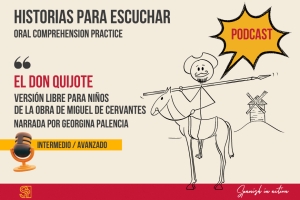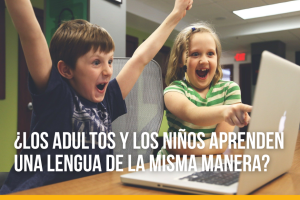Lee este artículo en español .
By Lucía Rodríguez.
We constantly remember you, learning Spanish will always be a goal to reach and in our school we will always offer ideas to learn in the most effective way. It can seem like a daunting task, but it doesn’t have to be. With the right approach and a bit of dedication, anyone can learn Spanish easily and efficiently. Here are some tips to help you get started:
- Immersion: One of the best ways to learn Spanish is through immersion. This means surrounding yourself with the language as much as possible. You can do this by speaking with native Spanish speakers, watching Spanish TV shows and movies, listening to Spanish music, and reading Spanish books and newspapers. This type of immersion will help you pick up the rhythm and flow of the language, as well as its vocabulary and grammar.
- Consistency: It’s important to practice Spanish on a regular basis in order to make progress. Make it a point to speak, read, write, and listen to Spanish every day, even if it’s just for a few minutes at a time. Consistency is key, and it’s better to practice a little every day than to cram for hours once a week.
- Structure: A structured approach to learning Spanish can be helpful, especially if you’re a beginner. You can enroll in a language class, use textbooks, or follow a structured online course. Having a set curriculum to follow will give you a clear understanding of what you need to learn, and help you make steady progress.
- Practice with a tutor or language partner: Practicing with a native Spanish speaker is an effective way to improve your language skills. You can find a language partner through online language exchange programs, or hire a private tutor for one-on-one lessons. This type of interaction will help you get comfortable speaking the language and give you the opportunity to practice your pronunciation and grammar.
- Use memory aids: Learning Spanish vocabulary can be challenging, but there are a number of memory aids that can help. For example, you can use flashcards to memorize words and phrases, or create mnemonic devices to help you remember grammar rules. There are also many language learning apps that use spaced repetition to help you retain what you’ve learned
- Immerse yourself in the culture: Finally, immersing yourself in the culture of Spanish-speaking countries is an effective way to learn the language. You can do this by traveling to a Spanish-speaking country, attending cultural events, or trying traditional Spanish food. This type of cultural immersion will give you a deeper understanding of the language and help you build a stronger connection to the culture.
In conclusion, learning Spanish is a process that requires time and dedication, but it’s also an incredibly rewarding experience. By using a combination of immersion, consistency, structure, practice, memory aids, and cultural immersion, you can make steady progress and become a confident Spanish speaker in no time.
Bye.



